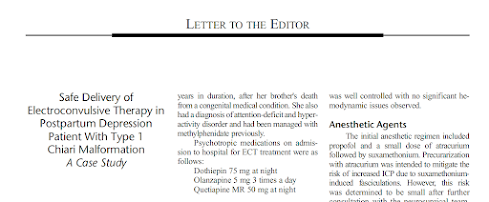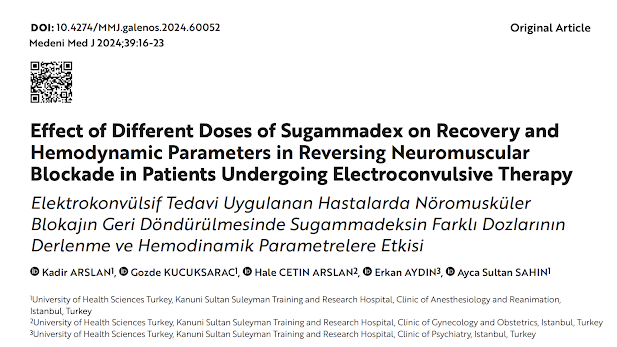Seizure Threshold in MECT: LTE in Indian J Psychol Med

Out on PubMed, from authors in India, is this LTE: Should We Re-estimate the Seizure Threshold during Maintenance ECT ? Purohith AN, Jammigumpula A, Praharaj SK. Indian J Psychol Med. 2023 Nov;45(6):658-659. doi: 10.1177/02537176231172309. Epub 2023 Jun 11. PMID: 38545525 The LTE is here . And here: While the overall premise of this letter is reasonable, the case details are so random and meagre, that not much can be gleaned from them. There is no mention that the parameters of the stimulus package influence ST, there is no mention of the original ST, and EEG was not recorded. Yes, ST increases with ongoing treatment, and it decrements over time. Reasonable stimulus doses should be administered in both the acute series and during continuation/maintenance ECT. Re-titration in the transition to C/MECT is usually not necessary. Kudos to these authors for bringing readers attention to the issue of appropriate stimulus dosing in all phases of ECT care.












